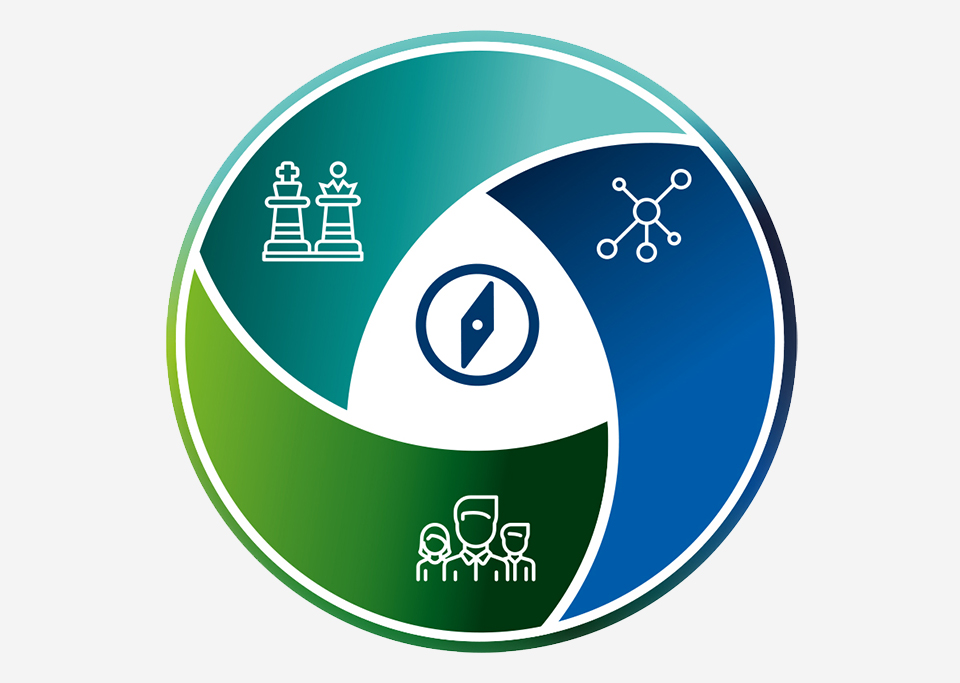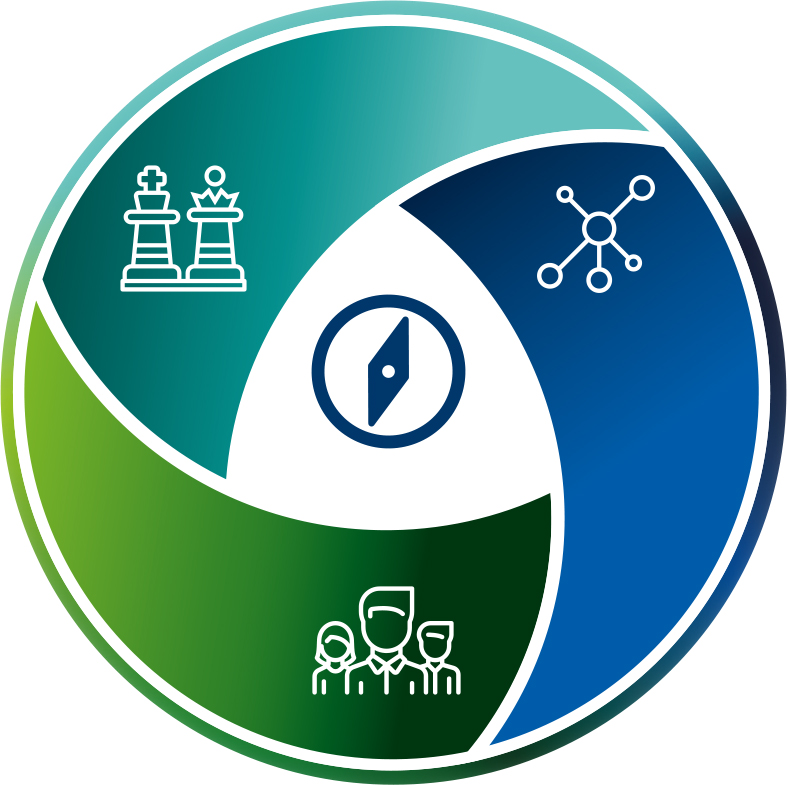How to strengthen the organizational change capability within your organization and the role of the triad of strategy, organization and human resources in this process
The ability to adapt quickly and flexibly to changing conditions has been considered a key success factor for a long time – but the year 2020 shows us in fast motion what happens when organizations can no longer keep up with the dynamic developments in their relevant environments.
In addition to increased security measures in the course of infection control or a broader positioning of the supply chain, to name just a few examples, the Corona pandemic is also proving in many respects to be a catalyst for developments already underway and is accelerating trends such as digitization. With the increased speed of change, the demand on organizations to keep a close eye on their relevant environments and to identify needs and opportunities for action at an early stage is also increasing. The key is to pick up on the right observations and follow them up in a smart way.
Despite all the challenges, however, crises always bring opportunities: For example, we can currently observe numerous organizations that are surprising the market with creative, innovative solutions and thus taking advantage of current opportunities. Many organizations, including established corporations, however, are struggling to save their business model or to transfer it piece by piece to the new reality. It turns out that it’s not (just) the big players that win, but above all those that are particularly adaptable.
What are the reasons?
Organizations are successful when they are highly responsive to social developments, find valuable solutions to social bottlenecks and needs, and offer them at conditions that are perceived as appropriate. Organizations disappear when these needs no longer exist or change and no adequate solutions can be provided for them.
In every crisis, there are winners and losers. The winners often include entrepreneurs with innovative ideas that they quickly bring to fruition. These are not always just the large corporations.
How can the organizational ability to change be strengthened?
The requirements of customers and markets are changing. Careful observation of the relevant environments is therefore indispensable for organizations – only in this way is it possible to perceive the changes, identify needs and opportunities for action at an early stage, and develop solutions.
Numerous examples of organizational blindness show that this is often easier said than done.
Management often does a very good job here and develops promising concepts – but these change projects fail far too often in the implementation stage and do not achieve the hoped-for results. This not only leads to cynicism and change fatigue among managers and employees, but also costs the organization a lot of energy.
Organizational blindness

Organizations only see what they see. They do not see that they do not see what they do not see.
In their perception of the environment, organizations follow certain observation and evaluation patterns that have been established and consolidated over the years. This makes sense and is important. Without these patterns, organizations would not be able to act. However, this creates blind spots: relevant developments around the organization are not perceived because they are not seen as such due to the established observation and evaluation criteria. You can read how to counteract this risk in our article on systems theory in practice.

How can change be achieved successfully? What is the importance of interlinking strategy, organization, and personnel?
Read more and download our free digital presentation on successful transformation processes.
Effectively interlink strategy, organization, and personnel
The reason why change projects in organizations do not succeed is often that they do not take the organization as a whole into account. A change in strategy, for example, in many cases also requires adjustments in the organizational structure. In addition, managers and employees may need to be prepared for new tasks or different processes. However, all of this must be taken into account. Particularly in the case of far-reaching organizational transformation processes, effective interlinking of strategy, organizational and personnel development is necessary in order to design and implement them successfully.
Furthermore, it is important to establish a fit between the goals of the change process and the corporate culture. If there are too many discrepancies here, the corporate culture can hinder the change project or even lead to its failure. If the currently practiced corporate culture restricts corporate performance, cultural development makes sense. In all these processes, leadership plays a decisive role as a co-creator and role model in the change. As change navigators, managers must therefore be closely involved in all processes to ensure that change succeeds at all levels.
Change is not equal to change
Changes in organizations can occur in very different forms and to very different extents. We distinguish between the following three stages:
- First order change: Adjustments that are part of the natural optimization of an organization, e.g. the introduction of new software
- Second order changes: Reactions to an acute event of change, e.g., crisis management or the recognition of a problem that requires radical restructuring
- Third order changes: Third order changes: Improving an organization’s ability to learn and adapt in order to identify opportunities at an early stage and avoid radical restructuring. This can be achieved on the one hand through genotypical transformation and on the other hand foresighted self-renewal
A successful change of the change, i.e. a third-order change requires this triad of strategy, organization and personnel – and we have been playing it skillfully as a systemic organizational consultancy for more than 35 years. Taking into account the elements of corporate culture and leadership, the relevant processes are effectively interwoven and communication and decision-making routines as well as working methods are implemented. This enables your organization to recognize and react to relevant needs for action and opportunities in the markets at an early stage.
Programs to strengthen the organizational ability to change
Our consulting services
In order to successfully design the transformation of a company, the triad of strategy, organization, and personnel is essential. As systemic organizational consultants, we have special expertise in dealing with the interdependencies within a company. With us, you have all services under one roof and experts at your side.

Strategy
Develop your strategy with us to actively shape the future even in times of uncertainty.
Organization
Together with you, we will answer the question of which organization your organization needs.
Personnel
Ensure the performance of your organization with new HR solutions, now and in the future.
Leadership
Establish a form of leadership that enables constant organizational adaptation to the challenges of the times
Culture
A culture that fits the strategic goals of an organization significantly increases organizational performance.
Together with you, we create solutions
that do not yet exist today
 Frédéric SedlákSenior Consultant | HR Management
Frédéric SedlákSenior Consultant | HR ManagementWe are always at your service+49 4102 69 93 22
Ask for free informationf.sedlak@spconsulting.de
Further Information
If you would like to learn more about us and our consulting approach, we look forward to a personal conversation with you! Simply make an appointment with us.

Online
Make a non-binding inquiry and let us know your expectations
 Frédéric SedlákSenior Consultant | HR Management
Frédéric SedlákSenior Consultant | HR ManagementWe are always at your service+49 4102 69 93 22
Ask for free informationf.sedlak@spconsulting.de








